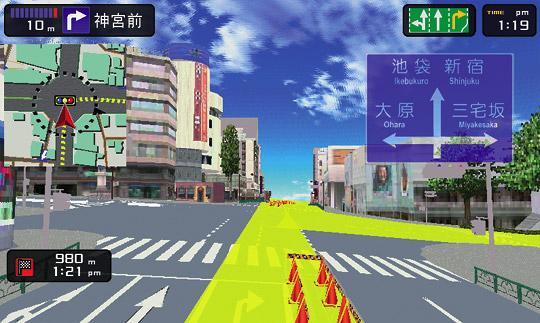Web portals to battle for drivers’ eyeballs?
Jul 17, 2006 — by LinuxDevices Staff — from the LinuxDevices Archive — viewsAutomotive infotainment may become the next battleground for Web portals, according to ABI Research. In an effort to differentiate their products, navigation vendors and automakers are expected to begin offering 3D renderings, images of buildings, and location-aware searches, a combination that presages the emergence of Web portals targeting drivers, ABI Research reports.
“Google, and Microsoft's Live.com, are portals that provide visual display and location-aware search very similar in functionality and appearance to some of the hybrid connected navigation and telematics systems in Japan, such as Honda's Internavi and Toyota's G-Book,” said ABI Research's principal transportation analyst Dan Benjamin. “This type of integration really makes a lot of sense.”

Sony's Linux-based NV-XYZ features 3D and integrated ads
ABI notes that Google has been making a big push into location-aware advertising, and that many portals are arranging to get satellite and photographic imagery not necessarily available from map providers in the navigation space. The motivation is to push location-aware relevant advertising on top of points of interest.
“It's understandable why Honda and Volkswagen are working with Google to get this into vehicles, but it also highlights the inherent difficulties and demands of the automotive environment,” said ABI's transportation research practice director, Frank Viquez. “In order to utilize such applications, vehicles will need increased processing power, graphics acceleration, and a high-speed data connection.”
Smaller portable navigation (PNAV) devices that have become quite popular probably don't have the horsepower to handle these sorts of applications, according to Viquez. “As PNAV devices take on a greater infotainment role through the support of video and MP3 playback, real-time traffic data and soon satellite radio, it becomes increasingly difficult to add new functions while maintaining a pocketable form factor. It may make more sense for this type of content to be delivered to integrated automotive hardware, or perhaps a smartphone, rather than to the typical portable device,” he concluded.
Additional information on the automotive infotainment market is available through ABI Research's Automotive Infotainment Research Service.
This article was originally published on LinuxDevices.com and has been donated to the open source community by QuinStreet Inc. Please visit LinuxToday.com for up-to-date news and articles about Linux and open source.